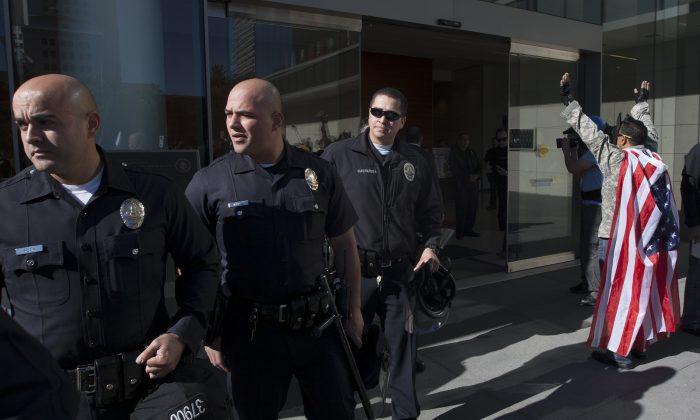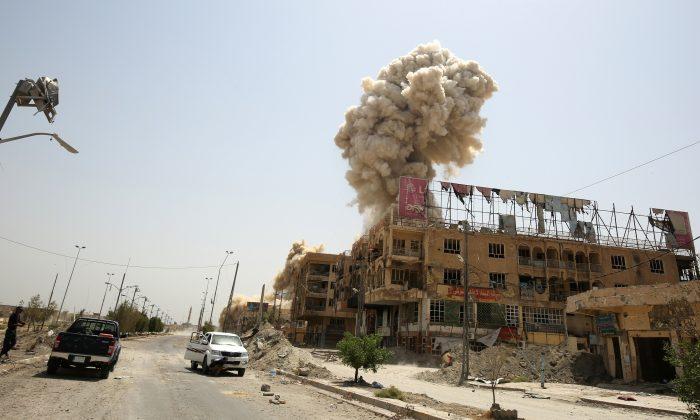When bystanders captured video of a homeless man being shot by the Los Angeles Police Department earlier this month, one version was posted online and seen millions by millions of people. But additional videos that will likely never see public scrutiny come from two sets of police body-worn cameras.
According to the LAPD, portions of what happened at the scene were captured by two police wearing body cameras. A spokesperson for the LAPD said on Friday the footage is still being “reviewed and analyzed as part of the ongoing investigation,” which is typical with evidence in open cases. Police are using almost two dozen eyewitness accounts and two bystander videos to look at whether there was any wrongdoing on the parts of the officers.
There’s one thing that won’t happen to the video, though, the LAPD spokesperson confirmed on Friday: The footage won’t be publicly released.
Police claim that the man who was shot and killed, 43-year-old Charly Leundeu Keunan, was attempting to unholster a rookie officer’s gun which prompted other officers to fire their weapons.
For the LAPD, the second largest police department in the United States, there’s no question over whether body-worn cameras are to be used. They already have a pilot program underway and aim to outfit their entire force of 9,000 officers by 2016.
Questions linger over what they will do with video once they have it, though. For now, they are far from being the poster child of police department for transparency.
In Seattle, where they have fared slightly better on the issue, police have taken the unprecedented step of setting up a YouTube channel just for body-worn camera footage. Much of the footage is tedious, mundane, or largely blurred out to protect people’s privacy. The work in progress has made some strides, though, as protest footage from January 19 shows.
Timothy Clemans, a civilian and computer expert who works with the Seattle Police Department on the technical side of dealing with the videos, said that the case in LA is clearly about secrecy just for the sake of being secret.
“A lot of people inside of the police department don’t want these videos released, ever,” said Clemans on Friday. “The biggest deal in California is that these videos are exempt from their open records act.”
His perspective is that releasing the videos will be more of a benefit than a loss.
“I don’t think police realize that these videos will help them,” he said, adding that the more information, the better.
“Let’s get the footage out there and let the footage speak for itself,” said Clemans. “Let’s focus on what the footage itself tells us. I’ve read too many police reports that contradict the video.”





Friends Read Free